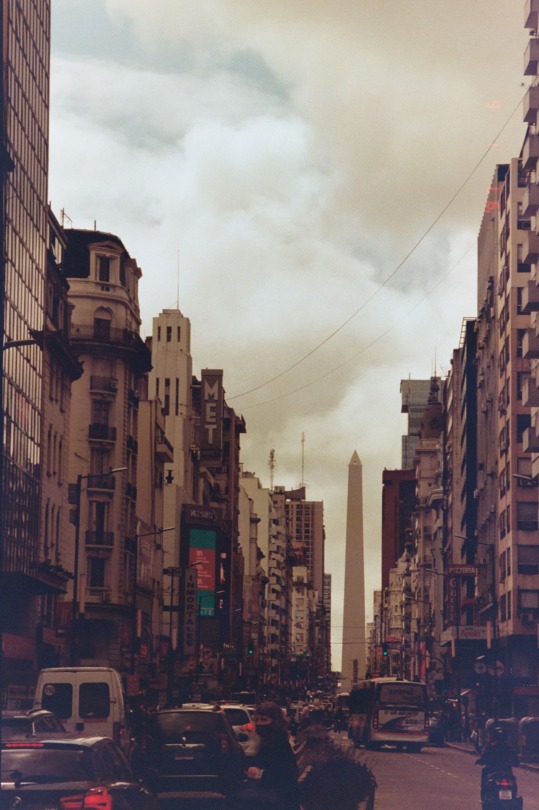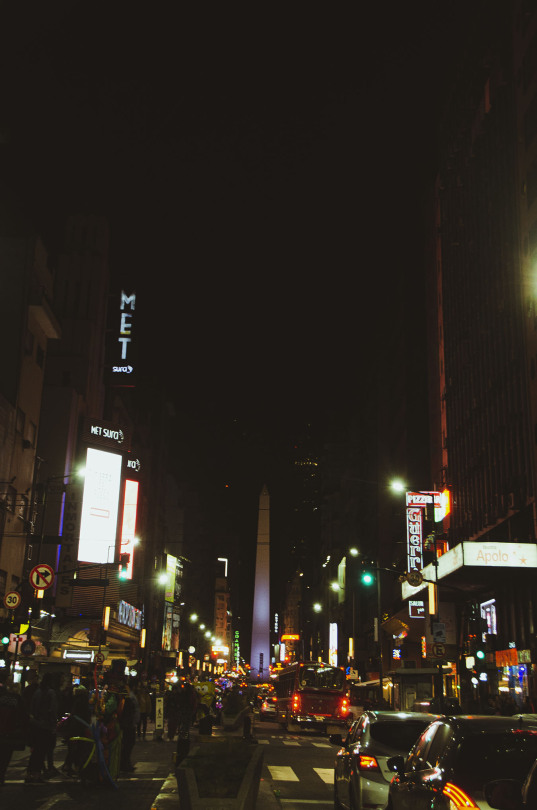#Obelisk Buenos Aires
Explore tagged Tumblr posts
Video
2024 - Buenos Aires Por Flickr: Night view of the Obelisco from an UBER ride on Av. Corrientes. The obelisco is located in Plaza de la República, at the intersection of Corrientes and 9 de Julio avenues, San Nicolás neighbourhood.
#2024#Buenos Aires#BA#Obelisco#Obelisk#Monument#Buenos Aires Obelisco#Obelisco Buenos Aires#Buenos Aires Obelisk#Obelisk Buenos Aires#Street#Street Scene#Night Scene#Night Lighting#Night#Av. Corrientes#Av. Corrientes Buenos Aires#TED'S PHOTOS#Cropped#TED MCGRATH#Vignetting#LUMINAR NEO#flickr
2 notes
·
View notes
Text
Another video of the awesome Louis Tomlinson: Live at the Buenos Aires Obelisk project. Thanks to Argentinian Louies and awayinarg [13.9.2024]

Louis in Argentina earlier this year.
32 notes
·
View notes
Photo

9 de Julio Ave. - Aerial North to South
14 notes
·
View notes
Text

Obelisco, CABA | Argentina.
35 mm. Olympus Stylus.
#argentina#photografy#cotidiano#no filter#not filtered#travel#ligth#trip#photooftheday#olympus stylus#35mm photography#35mm flim#35mm color film#camara analogica#analog#analogic photography#35mmdiary#buenos aires#obelisco#obelisk#photoblog#street art#city photography#city life
68 notes
·
View notes
Text




Lali in Buenos Aires
#lali#lali esposito#latina#pop#pop music#latinmusic#latinas#latin girls#tini#cazzu#nicki nicole#trap#peso pluma#christian nodal#bad bunny#reggaeton#buenos aires#argentina#obelisk#obelisco
7 notes
·
View notes
Text

"the sky, the day and the frame" by pavane lenoir, 2024
#obelisco#obelisk#buenos aires#black and white#digital photography#black and white photography#mine#q#196
3 notes
·
View notes
Text

18 notes
·
View notes
Text

Obelisco y Diagonal Norte, c. 1951-1952. Grete Stern Gelatin silver print.
Obelisk of Buenos Aires, Argentina, along with the bustling Diagonal Norte Avenue.
#black and white#photography#fotografia#fotografie#photographie#1950s#grete stern#argentina#architecture#foto#cityscape#city scene
263 notes
·
View notes
Text

Manifestación en el obelisco, Buenos Aires, 2022.
¡Argentina gana la Copa América 2022!
The demonstration pictured was actually a worker demand for more rights and higher wages. Today the vastness of the open area around the Obelisk is likely to be even more crowded with people celebrating yesterday's victory over Colombia in the Copa América. Not a place to be if you do not like crowds!
#urban landscape#monuments#obilesco#demonstration#buenos aires#argentina#2022#photographers on tumblr
13 notes
·
View notes
Text

Obelisk of Buenos Aires is located in the Plaza de la Republica. It was erected in 1936 to commemorate the founding of the city.
2 notes
·
View notes
Note
Hola 🫶🏻
Puerto Madero is pretty expensive in general. As you can imagine, tourists like to visit that place, so the restaurants owners are not stupid and they like to put whatever price they fancy on their food. I live here in Buenos Aires, 20 minutes away (on subway) from Puerto Madero. I only go there with my family to have lunch on especial occasions (like birthdays). When someone says "Yeah, I went to Puerto Madero and had lunch there the other day", it's more likely that that person was celebrating something and not just having a casual lunch. I could check which ones are less expensive or name you the ones where I've been in the past, if you want.
Palermo I'm less familiar with when it comes to restaurants, mostly because the few times I went there with my family, we usually just ate lunch at McDonald's/Burger. It's a lovely place to walk around, but I think there are less restaurants options compared to Puerto Madero, where there's is one restaurant right next to another one.
When I was looking around at the neighborhood after being given my hotel details, my reaction was very much, "This place is too wealthy for me." 😅
A co-worker of mine who has family in BA had recommended Pizzaría Güerrín for pizza which is I think just a couple blocks west of the Obelisk?
I am definitely not looking for overly fancy or high end restaurants as they a) cost A LOT of money (and I am already spending so much on this trip already!) and at least here in Toronto a lot of the high end restaurants all tend to feel kind of the same? (When I was first trying to do some internet research, for example, Don Julio would pop up on every single blog or travel diary list, but then I'd look at reddit and every local would call it a tourist trap steak house lol. Then I found out it had a michelin star and went, "Oh. That's why.")
Where I live we have a wide variety of different cultural cuisines spread across the city, but there isn't a very large Argentinian (or Latin American in general) cultural presence, so I was hoping to take the opportunity to get to try things like empanadas and alafajores. (And ice cream. And pizza which everyone tells me is the best.)
2 notes
·
View notes
Video
Esmeralda ~ Arenales
#Bob Frassinetti#Argentina#Buenos Aires#Art Argentina#Antiques Argentina#Travel Argentina#San Telmo Buenos Aires#A short walk around the City of Buenos Aires#a Friday#second month of the Year#2012#from the obelisk#a needle like tower#similar to the one is Washington#DC#or even the Egyptian ones found in London#but plain and made from cement#along Diagonal North to the Palace of Justice#via the Colon Theater#the synagogue of the neighborhood Tribunalaes#then Plaza San Martin#the America Express building and along Arroyo Street#Sofitel Hotel#The Fernandez Blanco Museum and ended up in Retiro#Coffee House and Train Terminal Retiro for the trip back home#Adolfo#Alsina#Corrientes and Carlos Pellegrino Streets#Arroyo Street#along the street top end Galleries
0 notes
Text
Fans organized a project to promote LOUIS TOMLINSON: LIVE at the Obelisk in Buenos Aires, Argentina. via awayinarg

This ad ran every 15-20 minutes all day, on 13 Sep 2024, thanks to the effort of the fans.
Thank you, Argentina Louies!!
38 notes
·
View notes
Note
Can you do the california dreamin'with a pic of the Buenos Aires Obelisk? Pls
1 remains

37 notes
·
View notes
Text
Nordelta, one of Buenos Aires’s most exclusive areas, is a conglomerate of gated communities with over 50,000 residents. It sits on the wetlands of the River Paraná, second only to the Amazon in South America. And it was built by emptying and refilling canals, which [...] reduced the wetlands’ capacity to absorb rainfall. Nordelta opened in 2001, right when the economy collapsed after a decade of extreme neoliberal adjustments. In 2001, Argentina had five presidents in the span of 11 days, police killed 39 citizens during protests, and personal bank accounts were frozen [...]. Nordelta’s main attraction for consumers was [...] a distinguished, United States lifestyle. [...] Master-planned communities (MPCs) are privately built and designed neighborhoods in the city outskirts constructed by large-scale developers, offering amenities, services, and rules through homeowner associations. [...]
While driving through the main road to the conglomerate, [...] to the right, malls, apartments, and private schools with English names that are only accessible by car. [...] Over 8,000 workers cross these gates daily to provide multiple services. [...] These workers cannot walk on the avenues because “Nordelta residents do not want to see them around,” [...]. This segregationist structure of Nordelta emerged alongside the expansion of the neoliberal state. While Nordelta today resembles Miami, it was initially thought of as the French ville nouvelles (“new towns”), which aimed to integrate rural migrants within European cities.
---
In 1977, engineer Julián Astolfoni acquired the first plot of land from the descendants of [...] a general who had obtained the lands previously peopled by Guaraníes and Carupás after fighting in the “Desert Campaign against the Indians.” When Astolfoni got the plot, Nordelta was conceptualized to fix the problem of undesired urban sprawl at a time when the [...] state of the last civic-military dictatorship was trying to “eradicate” the villas miseria (shantytowns) for being “filthy” spaces threatening private property and national moralities.
The project goals shifted once it was finally approved in 1992 when Astolfoni partnered with businessmen [EC] and other North American corporations, [...] including [...] a U.S. real estate specialized in MPCs. [...] Nordelta retained the enduring idea of the desert as a space to be filled. Like every pioneer narrative, it positioned Astolfoni and [EC], the engineer-corporate duo, as heroes saving “neglected” environments and conquering a wetland that would remain otherwise “vast, useless, dangerous, and vacant.” They would do this by emulating the U.S. MPCs of the 1960s, the ones that turned public malls into consumption centers [...].
---
In the 1990s, president Carlos Menem’s government extended neoliberal measures and promoted Miami as a tourist destination for middle-class families [...]. Despite its diversity, Miami became a symbol of whiteness and economic success [...]. The neoliberal reconfiguration of white exceptionalism as a desire to emulate western geographies became Nordelta’s mark, offering global lifestyles to the elites who can now “live like in Miami, but a few miles away from the Buenos Aires Obelisk,” as an Argentinian newspaper with connections to Nordelta claimed. [...]
---
In 2001, when the machines were opening the soil, a woman [...] found ceramic pieces and bones. The finding led to an organized movement [...]. A team of archaeologists who had been working in the area before visited the place, corroborated the existence of an ancestral site, and registered it as the Punta Canal archaeological site. [...] Despite protests [...], the company sent excavators and destroyed a significant portion of the site. [...] [T]he organized group of neighbors and Indigenous peoples constituting the Movimiento en Defensa de la Pacha Mama set out to protect the archaeological remains and the Indigenous cemetery [...]. [T]heir organization pushed for the recognition of the land, now named Punta Querandí, as communitarian in 2020 [...]. Furthermore, [...] the movement achieved the return and reburial of 42 bodies from ancestors whom an archaeologist from the U.S. Central Intelligence Agency had exhumed in 1925. [...]
[T]his long, complex, and well-documented story of the emergence of Punta Querandí [is told] in the museum, el Museo Autónomo de Gestión Indígena, which also has a digital archive. Despite the developers’ representation of the area as wild and rural, Punta Querandí has “made visible that the reality of Indigenous Peoples also occurs in Buenos Aires,” [...]. [T]he desegregationist project of Punta Querandí, a land not attached to geneticized or archaeologized visions of Indigeneity, but rather a Territory where Guaraní, Qom, Colla, Moqoit, or Aymara Peoples, among many others, can reunite [...].
---
Punta Querandí and its desegregationist project shows the power of edges. [...]
Exemplified by Nordelta, MPCs generate profit by transforming rural into elite lands while rearticulating racial and spatial borders that make distinctions sharper, more guarded, and less porous -- between centers and peripheries, grounded and flooded land [...]. MPCs originated in the U.S. and continue to circulate American imaginaries of race, segregation, and neoliberal commons worldwide. [...] By selling reductionist archetypes, such as the fantasy of white Miami, in order to profit from them, real estate developments obscure how environments continue to be complex, multiple, and diverse despite the violence enacted upon them.
---
Text by: Mara Dicenta. “The Violence of Gated Communities in Buenos Aires’s Wetlands.” Edge Effects. 20 April 2023. [Bold emphasis and some paragraph breaks/contractions added by me.]
45 notes
·
View notes
Text
My most argento headcanon is that Theo is not a soccer fan but Eloise breaks the McDonald's at the Obelisk in Buenos Aires along with the other fans celebrating that Messi brought the cup home.
#theloise#theo sharpe#eloise bridgerton#theo x eloise#eloise x theo#theloise headcanon#Messi x Bridgerton#Messi x Theloise
5 notes
·
View notes